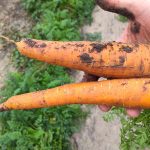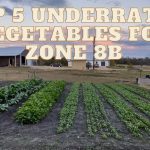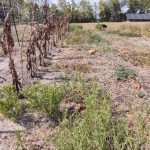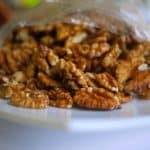There are some tasty, yet underrated vegetables for zone 8b that thrive in Southern gardens during the fall months. These productive plants deserve more attention!
Let’s talk about our top 5 underrated fall vegetable picks along with tips for growing them successfully:
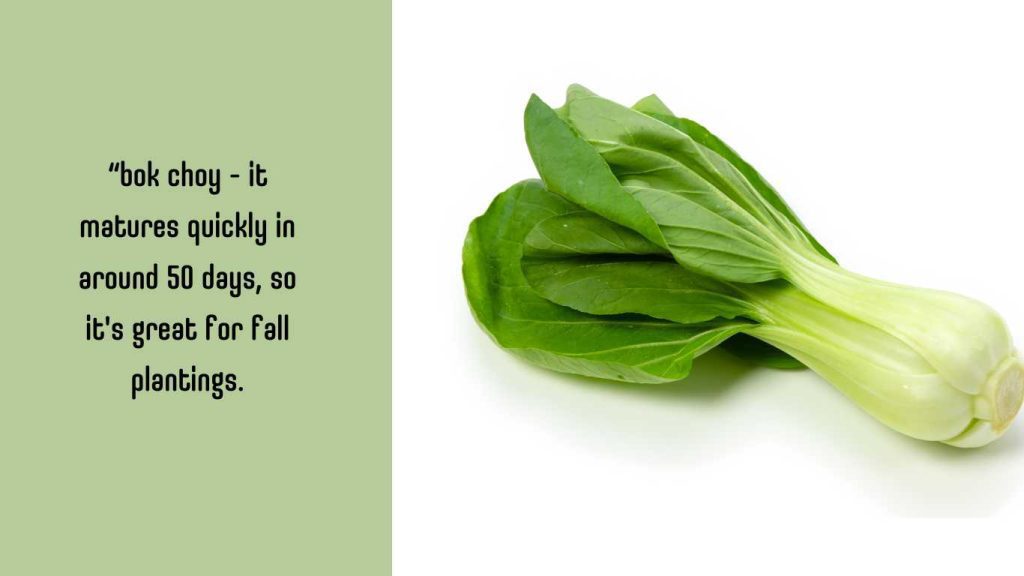
Bok Choy
Bok choy is a super versatile fall veggie that deserves a spot in every southern garden. This Chinese cabbage has several common names including pak choy or pok choy. The taste is similar to mustard greens but milder, with a crisp texture and tender leaves. A great thing about bok choy is that you can harvest some of the mature stems and leaves while leaving some of the plant intact. This allows it to continue growing for a continuous harvest over weeks
Cooking Bok Choy
The entire bok choy plant is edible, from the thick white stems to the dark green leaves. It can be used in a variety of dishes like salads, coleslaw, soups, stir fries, and more. Bok choy also makes a beautiful edible garnish.
One of my favorite ways to cook bok choy is to sauté it in olive oil. To do this, separate the leaves from the stems. The stems take longer to cook, so I sauté those first for 2-3 minutes. Then I add the leaves and sauté just until wilted, another 1-2 minutes. Season with salt, pepper and a dash of soy sauce. The stems become tender while the leaves stay silky. It’s a simple but delicious way to enjoy this veggie.
How to Grow Bok Choy
A few key facts about bok choy – it matures quickly in around 50 days, so it’s great for fall plantings. You can grow it as baby greens for salads or let it size up fully. The whole plant is edible including the tender white stems.
In my garden, I prefer to grow bok choy to full size rather than baby greens. I’ve had great success direct seeding it in mid to late October here in zone 8b. Bok choy thrives in cooler weather making it ideal for fall planting.
| Varieties | Planting | Seeding | Spacing | Other Tips |
| Green varieties like Joi Choi or Mei Qing Choi | Mid to late Oct for zone 8b | Either direct seed or transplant | Seeds 8″ apart in rows | Needs consistent moisture |

Mizuna Greens / Greens Mix
A fun fall veggie to grow is a mix of Asian greens like mizuna, tatsoi, arugula, and red mustard. This blend of colors and flavors adds diversity to fall salads.
Varieties in the Mix
- Tatsoi has round, spoon-shaped leaves with a mild mustard flavor.
- Mizuna has feathery, serrated leaves that hold dressing nicely.
- Arugula brings a bright, zesty punch.
- Red mustard has bold, spicy flavor.
Flavor Profile & Uses
You can use these tasty greens in salads, stir fries, and as a spinach substitute. Their flavor ranges from mild to zesty depending on size and variety.
My personal favorite way to enjoy them is fresh in salads. I find this Asian green mix much easier to grow than traditional lettuce mixes in the hot southern zone 8b climate.
How to Grow
A few key points about growing mesclun greens:
- They mature quickly in just 21 days.
- Smaller leaves have a milder taste, while larger leaves are more bold.
- You can harvest leaves continuously throughout the season.
- The best time to plant in zone 8b is mid to late October.
In our garden, We’ve had success direct seeding a dense row of the greens mix on drip irrigation. Overhead watering is critical for good germination. I prefer harvesting the leaves small for a mellow blend of flavors.
| Varieties | Planting | Seeding | Spacing | Other Tips |
| Tatsoi, mizuna, arugula, red mustard | Mid to late Oct for zone 8b | Direct seed | Dense rows | Overhead water for germination |
Give this colorful blend of greens a try this fall! They’re quick, easy, and add diversity to the garden.
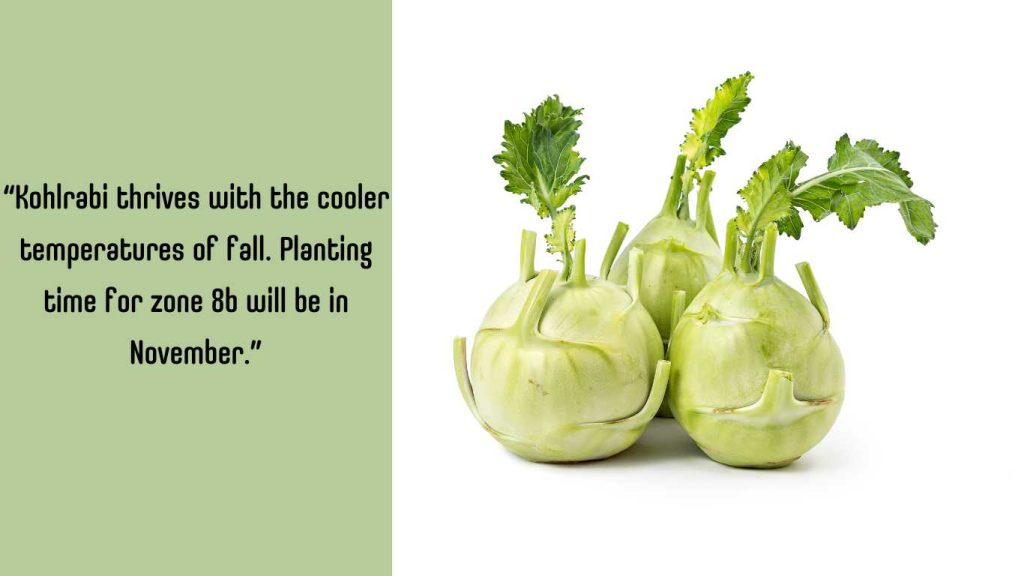
Kohlrabi
Kohlrabi is an underappreciated and not well-known fall vegetable that deserves more attention in southern gardens. It is actually a variety of Brassica oleracea, making it part of the cabbage family.
How Does Kohlrabi Taste
The leaves of kohlrabi taste similar to kale with their vibrant, earthy flavor. The bulb itself has a sweet, mild taste – a cross between cabbage and turnip. Both the bulb and nutrient-packed leaves are edible and delicious.
How to Cook Kohlrabi
Some of my favorite ways to enjoy kohlrabi are fermenting shredded bulbs, roasting small bulbs, or sautéing the greens. The bulbs can be fermented with seasonings like garlic, onion and peppers for a tangy side dish. Roasting brings out their natural sweetness – just toss in olive oil, salt and pepper. The leaves make a tasty sauté with bacon grease or chicken broth.
Kohlrabi Growing Tips
When growing kohlrabi, transplanting is recommended over direct seeding. This allows for even spacing without thinning. I use a walk-behind seeder with the hole size modified to sow seeds densely, then thin to 8-12 inches apart. Start transplants 3-4 weeks before planting out. Varieties like the quick-maturing Quickstar and color contrasting Purple Vienna are great options.
Kohlrabi thrives with the cooler temperatures of fall. Planting time for zone 8b will be in November. The Quickstar variety matures rapidly in just 35 days, while bulbs can be harvested starting at 3 inches diameter. Consider staggered plantings of different varieties to extend the harvest season.
| Varieties | Planting | Seeding | Spacing | Other Tips |
| Quickstar, Purple Vienna | November for zone 8b | Either direct seed or transplant | Transplant at 8-12” | Monitor soil moisture |
Why Grow Kohlrabi
With its quick growth, great flavor and nutritional value, kohlrabi deserves a spot in fall gardens. Give this unique veggie a try!
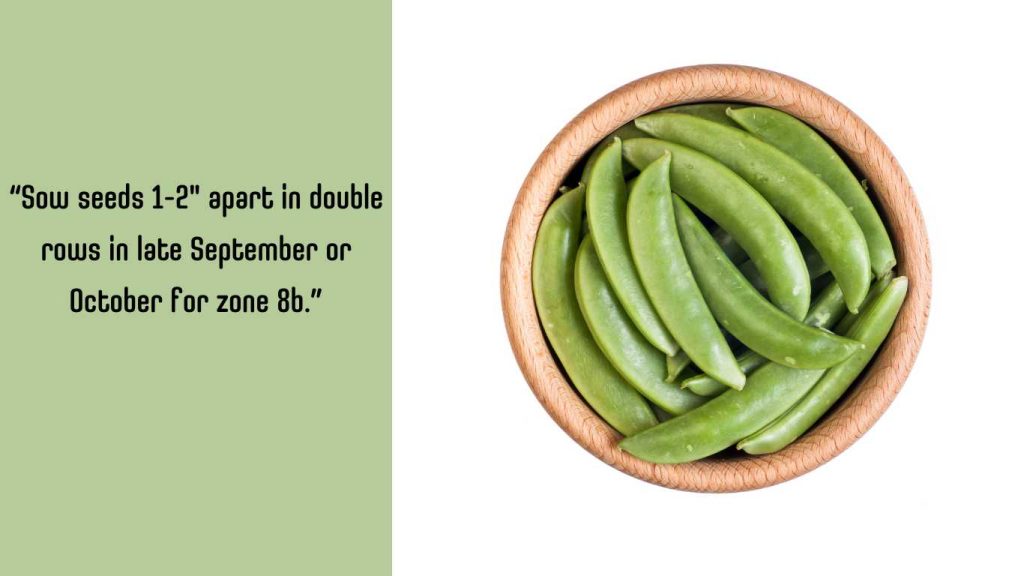
Sugar Snap Peas
Sugar snap peas are a tasty addition to fall gardens in the south. The crisp, sweet pods are delicious eaten fresh or cooked.
Taste and Uses
Sugar snaps have a sweet, succulent taste perfect for eating raw. The pods are crunchy with a flavor similar to peas. You can also cook them briefly to enjoy as a side dish.
Growing Tips
Peas thrive in cooler weather making them ideal for fall planting. Sow seeds 1-2″ apart in double rows in late September or October for zone 8b. Use trellising to support the vines. Ensure consistent moisture, especially during flowering and pod set.
Some of the best varieties for fall are Cascadia, Sugar Ann and Super Sugar Snap. Cascadia has good disease resistance while Sugar Ann and Super Sugar Snap are heavy producers.
Why Grow Sugar Snaps
With their great flavor and cold hardiness, sugar snap peas are a tasty addition to the fall vegetable garden.
Let me know if you would like me to expand or modify this section on sugar snap peas in any way. I can add more growing details as needed.
| Varieties | Planting | Seeding | Spacing | Other Tips |
| Cascadia, Sugar Ann, Super Sugar Snap | Late Sept to Oct for zone 8b | Direct seed | Seeds 1-2″ apart in double rows | Use trellising, keep consistent moisture |

Carrots
Crisp, sweet carrots are a classic cool-weather crop for fall gardens. The key to success is proper soil preparation and consistent moisture.
Taste and Uses
Fresh carrots have a sweet, aromatic flavor perfect for eating raw or cooked. They lend color, nutrition and taste to soups, roasts, salads and more.
Growing Tips
For the best results, sow carrots in a double row on drip tape to ensure adequate moisture. Break up and loosen the soil to allow the roots to develop properly. Varieties like Envy tolerate heavier soils better.
In zone 8b, start seeds in mid-October. Plant densely then thin to 1-2 inches apart after germination. Water twice daily to keep the soil consistently moist those first couple weeks, which is vital for germination.
Why Grow Carrots
With proper soil prep and moisture, you can enjoy sweet fall carrots. They’re versatile for fresh eating or cooked dishes.
Please let me know if I should expand or modify this section in any way to match the format of the previous veggie sections. I’m happy to make any changes needed!
| Varieties | Planting | Seeding | Spacing | Other Tips |
| Envy, Nantes, Scarlet Nantes | Mid Oct for zone 8b | Direct seed | Thin to 1-2″ after sprouting | Double row on drip tape, loose soil |


